What are antinutrients?
On one hand, foods contain nutrients, that is to say, substances which nourish the body. On the other hand, all foods contain some antinutrients as well, i.e. substances that do not nourish the body. Among them, we find substances that are more or less harmful to the body, ranging from those that simply do not provide us anything useful to those that might be considered as poisonousThe antinutrients that are found in seeds (cereal grains, grain legumes, nuts), leaves, roots and flowers of plants as well as eggs, are intended to prevent predators from eating them, or to protect them from destruction in the process of digestion in case they are eaten. They can also be of use in order to avoid premature seed germination.
 However, animals have developed different systems for neutralizing these substances and thus are nourished by plants. Each species is adapted to feed on different types of plants and/or other animals. The question is; what kind of plants and animals is the human digestive system adapted to in order to neutralize these substances?
However, animals have developed different systems for neutralizing these substances and thus are nourished by plants. Each species is adapted to feed on different types of plants and/or other animals. The question is; what kind of plants and animals is the human digestive system adapted to in order to neutralize these substances?Some of the antinutrients are easily digested by or eliminated from the organism of some animal species, but this process is much more difficult in people’s organism and so it happens at the expense of some harm to our organism. It is then necessary that foods with antinutrients are processed prior to their consumption in order to reduce their antinutrient content.
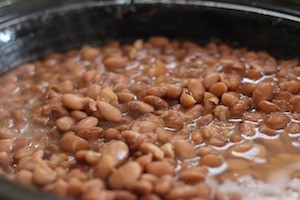 However, not all antinutrients are sensitive to any type of culinary processing. Furthermore, such processes may alter the beneficial nutrients of food.
However, not all antinutrients are sensitive to any type of culinary processing. Furthermore, such processes may alter the beneficial nutrients of food.In this article, a very brief index is published in which you can observe what the main antinutrient substances are; what foods are harmful in considerable quantities; how people and animals can neutralize them; and what the potential positive and negative effects on the human body are. The list is not exhaustive but it gives an introductory guidance on the main potential effects of some antinutrients.
For more details on each antinutrient, you may refer to the items found in the bibliography at the end of this article.
Prior to the list, you may find a small food classification index.
Grains: wheat, barley, rye, oat, millet, corn, spelt, kamut, sorgho
Pseudo-grains: quinoa, amaranth, wheat, buckwheat, teff
Legumes: soya, lentils, chick peas, peanuts, beans
Nuts: almonds, hazelnut, cashew, pignola, pistachio, brazil nuts, walnuts, macadamia, etc.
Seeds: sesame, flaxseed, poppy seed, sunflower, pumpkin
Flesh: meat, fish, shellfish
Fruits: sweet, acid and semi-acid fruit
Fruit-Vegetables: tomato, cucumber, egg plant, pepper, pumpkin, squash
Tubers: potato, carrot, sweet potato, Jerusalem artichoke, manioc (or tapioca), yam
Vegetables: leaves (lettuce, spinach, etc), flowers (cauliflower, broccoli, cabbage), etc
Nighshades: potato, tomato, egg plant, pepper
Diary: milk, yogurt, cheese, milk cream, ice-cream, etc.
| Antinutrient and food | Neutralization | Positive effects | Negative effects |
|---|---|---|---|
| Acid uric from break down of Purines present in: • Food: Flesh, organs, eggs, diary, legumes, some vegetables • Organism: Recycle of genes of died cells. |
• Carnivorous(not humans): uricase enzyme • Liver and kidneys |
• Purines are part of the chemical structure of our genes. • Antioxidant, prevent damage to our blood vessel linings |
• Gout, cardiovascular diseases, kidney stones. • Vegetarians say: Plant proteins do not increase gout risk, while the high-protein organs and flesh of animals do. |
| Sulphur in methionine and cysteine amino acids: Flesh, eggs, soy, some nuts and seeds, some vegetables |
- Calcium | • Antioxidant • Detoxification of heavy metals and all xenobiotics(some vegetables also contain big amounts of sulphur) • Sulphur atomsare needed in various body chemical processes,specially in the brain. |
• Calcium deficiency: osteoporosis ** |
| Phytic acid: bran of grains and pseudo-grains, all kind of seeds, nuts, legumes, potatoes |
• Birds and ruminant animals: phytaseenzyme • Partially by soaking, cooking, fermenting, sprouting |
• Antioxidant and anticarcinogenic • Reduce cardiovascular diseases • Reduce glycemicresponse, so diabetes • Binding of heavy metals |
• Binding with minerals of food in the gut: deficiency of iron, zinc, calcium and other minerals • Reduce the digestibility of starches, proteins, and fats. |
| Lectins: Grains, pseudo-grains, seeds, nuts, legumes, nightshade vegetables, diary, eggs. |
• Cooking with seaweeds and mucilaginous vegetables (okra) • Partially by soaking, boiling in water, fermenting, sprouting.Wheat, soy, peanuts and dried beans are the most resistant to neutralisation. |
• Anticarcinogenic(research is still in the preliminary stages) | - Leaky gut, - neurodegenerative disease, - inflammatory diseases, - infectious and autoimmune diseases - blood clotting |
| Saponins: Legumes, pseudo-grains, potatoes, red wine |
• Different results in studies for soaking, cooking and fermentation. • Cholesterol • Bile |
• Decreasecholesterol • Anticarcinogenic |
- Leaky-gut, - disturb digestive enzymes |
| Oligosaccharides: Legumes |
• Other animals: alpha-galactosidase • Sprouting, fermentation • Bacteria in the colon |
• Prebiotics | • Gas production |
| Avidin: Egg white |
Cooking | • Antibiotic | • B8 deficienc |
| Oxalates: • Food: Gains bran, nuts, soy,spinach, rhubarb, swisschard, chocolate, black tea, some fruits and vegetables. • Metabolite of fungus and dysbiotic flora. • Metabolism of the amino acids glycine and serine, vitamin C and sugar. |
Partially by cooking | *** | • Binding with calcium: Calcium and magnesium deficiency, kidney stones, disturb digestive enzymes. • Hyperoxaluria may play a significant role in autism, COPD/asthma, thyroid disease, fibromyalgia, interstitial cystitis, vulvodynia, depression, arthritis. • A study said people following a plant-based diet had a lower rate of kidney stones. • Researchers believed that "Oxalate hyperabsorptionmay be the main reason for stone formation in more than half of the idiopathic calcium oxalate stone formers" |
| Cyanide: beans, manioc, and many fruit pits (such as apricot kernels and apple seeds) |
• Cooking • phase II liver detox |
May be anticarcinogenic | Cerebral damageand letharg |
| Canavanine: alfalfa sprout |
• Cooking • phase II liver detox and kidneys |
Alfalfa sprouts (not canavarine) is good for: • Treatment of kidney stones (Traditional Chinese medicine) • May reduce cholesterol |
- Abnormal blood cell counts, - spleen enlargement, - Lupus (if big amount of juice sprouts is taken) |
| Goitrogens: soy, peanuts and cruciferous vegetables |
Cooking, fermenting (#) | Cancer preventative if food is eaten whole, goitrogensare doubtful. | Hypothyroidis |
| Tannins: legumes, some fruits and vegetables, tea, chocolate, wine, coffee, vinegar |
- Tannin-binding salivary proteins - Partially by soaking and cooking. About 90% by germination. |
• Antioxidant and anticarcinogenic • Antimicrobial |
(if taken in excess): - Zinc and iron deficiency, - decrease in both growth rate and body weight gain, - perturbation of mineral absorption, - inhibition of digestive enzymes, - accelerate blood clotting, - produce liver necrosis |
| Trypsin inhibitor: grains and legumes |
Partially bycooking, sprouting | May be anticarcinogenic | Growth inhibitionand pancreatitis |
| Alpha-amylase inhibitor: grains, legumes, nuts skin, stevia leaves |
Partially bycooking, sprouting | Antidiabetic and weight loss for reducing carbohydrate absorption | • Dysbiosis(candidiasis) • In research on animals: deleterious histological changes to the pancreas |
| Allicin and mustard oil: Onions, shallots, leeks, chives, scallions, and garlic |
• cooking |
• Cholesterol-lowering • Treatment for hypertension and atherosclerosis |
- Mal aliento, mal olor corporal • Bad breath, and bad body odor • Indigestion,acidreflux, diarrhea, stomach pain, gas • Anemia, reduced blood clotting of open wounds. • Allergic reactions • Accidental abortions in humans. Disturbs a baby's ability to breast feed. |
| Salicylates: berries and dried fruits, some vegetables, herbs and spices |
sulfotransferase enzyme | - May prevent certain diseases such as colon cancer. | Same as medicines (aspirin): - bleeding of the stomach and gastrointestinal tract, - dyspepsia, - skin reactions, - liver toxicity, - prolonged bleeding time, - impaired kidney function, - dizziness, - mental confusion - allergic reactions |
| Calcitriol, solanine, nicotine: green potatoes, egg plant, peppers, tomatoes, gojiberries |
• Liver and kidneys | • Lowers cholesterol • Anti-diabetic • Anti-allergic • Anti-itching • Anti-inflammatory • Antibiotic(bacteria, fungi, parasites, viruses) • Anticancer |
- Calcinosis, - muscle pain and tightness, - morning stiffness, - poor healing, - arthritis, - insomnia - gall bladder problems |
* Not found in literature
** This subject is very controversial. It will be dealt with in great detail in a future article.
# There aren’t conclusive studies about the degree of neutralization of the antinutrient in these processes.
Not all antinutrients of all foods have the same effects. For example, saponins in spinach and oat may increase and accelerate the body’s ability to absorb calcium and silicon. What is more, the amount of these antinutrients in each food can be very different. Phytic acid content varies greatly among plants. It may depend on the type of seed, environmental condition, climate, soil quality, how phytate is measured in the lab, and so forth. For example, phytates in sesame can range from 1.44 to 5.36 and in almonds from 0.35 to 9.42. In many cases there are not many studies that specify the reduction.
Antinutrients as medicine
All antinutrients have beneficial and detrimental health effects, since any toxic substance, whether natural or chemical can be used as medicine, have their corresponding side effects.We should distinguish between the intake of these antinutrients as part of the food and the intake as concentrated supplements, medication, juices or smoothies.
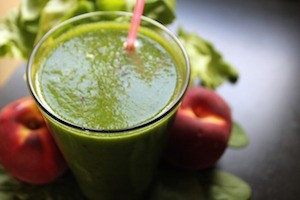 Some antinutrients are found in fruit and vegetables in such small amounts that their detrimental effect on health is not noticeable if you consume the food in moderation. This applies, for example, to psoralens that are found in figs, parsnip and parsley; or sulforaphane in broccoli and cabbage; or allicin in garlic and onion.
Some antinutrients are found in fruit and vegetables in such small amounts that their detrimental effect on health is not noticeable if you consume the food in moderation. This applies, for example, to psoralens that are found in figs, parsnip and parsley; or sulforaphane in broccoli and cabbage; or allicin in garlic and onion.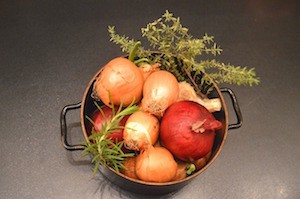 However, these substances are used medicinally in their concentrated form to treat certain diseases. For example, psoralens are used to treat psoriasis, but they may also cause skin cancer if a person is exposed to the sun’s ultraviolet rays. Sulforaphane is greatly antioxidant and detoxifying, and it is thought to be able to help in cases of autism, cancer and other diseases caused by heavy metal poisoning. However, it may have side effects such as seizures and liver inflammation. Allicin helps fight cancer and hypertension, but also prevents the healing of wounds, causing anemia and it is contraindicated in pregnant and lactating mothers. Cyanide is used to cure cancer, but at the same time may cause brain damage.
However, these substances are used medicinally in their concentrated form to treat certain diseases. For example, psoralens are used to treat psoriasis, but they may also cause skin cancer if a person is exposed to the sun’s ultraviolet rays. Sulforaphane is greatly antioxidant and detoxifying, and it is thought to be able to help in cases of autism, cancer and other diseases caused by heavy metal poisoning. However, it may have side effects such as seizures and liver inflammation. Allicin helps fight cancer and hypertension, but also prevents the healing of wounds, causing anemia and it is contraindicated in pregnant and lactating mothers. Cyanide is used to cure cancer, but at the same time may cause brain damage.Efficiency in reducing antinutrients
As you can see, it is important to respect the right food processing (soaking, fermentation, cooking, sprouting) in order to destroy these antinutrients, although in most cases these processes remove them only partially. For example, there is a 57-58% reduction in phytic acid after cooking beans that had been soaked 12 hours prior to cooking. And a 84% phytic acid degradation can be observed in the case of rye and 58% in the case of barley after soaking and germination.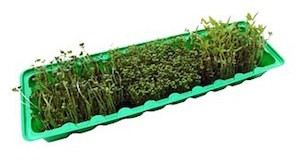 There is a significant loss of soluble oxalate in almost all test vegetables by boiling, ranging from 30 to 87% A non-significant reduction in trypsin inhibitor was observed on soaking and dehulling in legumes, while tannins showed a reduction of about 50% on soaking. Dehulled seeds showed a decline in tannin content by 70%. There was a significant reduction in trypsin inhibitor (75 per cent) and tannin (80%) by cooking. Germination of seeds for 48 h led to a reduction of 65% in trypsin inhibitor and 90% in tannins.Most antinutrients can be reduced by cooking, but some of them, such as saponins and oligosaccharides are only reduced through fermentation. Such loss of antinutrients during soaking is also associated with loss of desirable nutrients, such as proteins, minerals and vitamins are denaturalised in these processes.
There is a significant loss of soluble oxalate in almost all test vegetables by boiling, ranging from 30 to 87% A non-significant reduction in trypsin inhibitor was observed on soaking and dehulling in legumes, while tannins showed a reduction of about 50% on soaking. Dehulled seeds showed a decline in tannin content by 70%. There was a significant reduction in trypsin inhibitor (75 per cent) and tannin (80%) by cooking. Germination of seeds for 48 h led to a reduction of 65% in trypsin inhibitor and 90% in tannins.Most antinutrients can be reduced by cooking, but some of them, such as saponins and oligosaccharides are only reduced through fermentation. Such loss of antinutrients during soaking is also associated with loss of desirable nutrients, such as proteins, minerals and vitamins are denaturalised in these processes.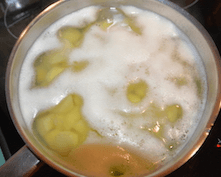 It is also importante to keep in mind that there is contradictory information about these issues in literature. For instance, some studies claim that fermentation allows the inactivation of saponins. Some vegetarian nutritionists argue that cooking and soaking also allow it, while paleo diet supporter nutritionists claim that there is no process that allows to neutralize them. Obviously, vegetarians tend to minimize the effects of antinutrients in vegetables and enhance the effects of flesh food; unlike the supporters of the paleo diets.
It is also importante to keep in mind that there is contradictory information about these issues in literature. For instance, some studies claim that fermentation allows the inactivation of saponins. Some vegetarian nutritionists argue that cooking and soaking also allow it, while paleo diet supporter nutritionists claim that there is no process that allows to neutralize them. Obviously, vegetarians tend to minimize the effects of antinutrients in vegetables and enhance the effects of flesh food; unlike the supporters of the paleo diets.In some foods, there is no method of culinary processing to eliminate antinutrients, and it is the body which must, at the expense of minerals, overload the function of the organs of detoxification and immune system.
On livingglutenfree.com you can find more information about how to remove phytic acid of grains, nuts and pulses.
Intolerances or antinutrients?
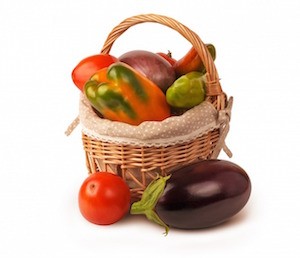 Certain antinutrients are well tolerated by the general population and may be properly metabolized and eliminated by the digestive and detoxification organs (mainly by the liver and kidneys) without any effect on health, provided they are not taken in excessive quantities as well as being naturally conained in a food, i.e., without being concentrated. This is the case of most antinutrients that appear in fruits and vegetables, such as salicylates, solanins, alkaloids and allicine. Only in the case of people with impaired detoxification system may an allergy or intolerance to these substances with serious health effects occur. If you have symptoms that appear as negative effects of an antinutrient, the cause could be the intolerance to a food that contains the antinutrient. In that case, the best way to be sure is by avoiding the food for at least 15 days, but sometimes the effect is not noticed until after months. Another possibility is to make a food intolerance test, although the result is not always conclusive, as IgG antibody production against intolerant food does not occur for some people, but other kind of immune reactions take place.
Certain antinutrients are well tolerated by the general population and may be properly metabolized and eliminated by the digestive and detoxification organs (mainly by the liver and kidneys) without any effect on health, provided they are not taken in excessive quantities as well as being naturally conained in a food, i.e., without being concentrated. This is the case of most antinutrients that appear in fruits and vegetables, such as salicylates, solanins, alkaloids and allicine. Only in the case of people with impaired detoxification system may an allergy or intolerance to these substances with serious health effects occur. If you have symptoms that appear as negative effects of an antinutrient, the cause could be the intolerance to a food that contains the antinutrient. In that case, the best way to be sure is by avoiding the food for at least 15 days, but sometimes the effect is not noticed until after months. Another possibility is to make a food intolerance test, although the result is not always conclusive, as IgG antibody production against intolerant food does not occur for some people, but other kind of immune reactions take place.In any case, if there is a food intolerance whose antinutrients should be eliminated by the organs of detoxification, a liver or kidney detox as well as a subsequent diet may be the solution, in order to avoid overloading these organs again.
.JPG) But certain other antinutrients such as phytates, oxalates, saponins, lectins, etc; which appear in the seeds (grains, nuts, pipes, etc.) and tubers (potato) are not completely eliminated with the culinary pre-processing, so they must eventually be neutralized by the body. For phytates, oxalates and tanins, such neutralization occurs at the expense of the minerals in food or in the body, which causes demineralization. Lectins and saponins can not be neutralized and cause leaky gut, among other possible diseases. Trypsin and amylase inhibitors can not be neutralized either, thereby causing a harmful effect on the digestion of other foods; while others, such as goitrogens affect thyroid function.
But certain other antinutrients such as phytates, oxalates, saponins, lectins, etc; which appear in the seeds (grains, nuts, pipes, etc.) and tubers (potato) are not completely eliminated with the culinary pre-processing, so they must eventually be neutralized by the body. For phytates, oxalates and tanins, such neutralization occurs at the expense of the minerals in food or in the body, which causes demineralization. Lectins and saponins can not be neutralized and cause leaky gut, among other possible diseases. Trypsin and amylase inhibitors can not be neutralized either, thereby causing a harmful effect on the digestion of other foods; while others, such as goitrogens affect thyroid function.Therefore, a healthy person can neutralize potential antinutrients in fruits and vegetables without any problems, but antinutrients in seeds will gradually worsen health conditions.
In addition to the antinutrients discussed in this article, there are other substances in legumes and cereals that may harm health, such as gluten in cereals, phytoestrogens in soy and sprouted grains, cafeine in coffee, theobromine in chocolate, etc.
In summary, foods classified by their antinutrient content
Generally speaking, the foods with major content of antinutrients are legumes, especially soya, followed by the rest of seeds (grains, pseudo-cereals, seeds, nuts). The next ones on the list are tubers, especially potato and manioc. At the other extreme, foods that seem to create fewer problems are fruits. Interestingly, legumes even cause health problems in animals.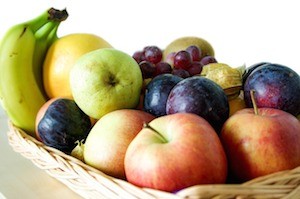 Almost all beans, legumes and grains are either inedible, poorly digestible or toxic in their raw state. Hence until humanity acquired the technology to create fire at will, legumes were not on the original menu that helped to shape our present day genome. Fruits are the only foods that are specifically designed by nature to be eaten, as the plant gets the benefit of spreading their seed either being rejected by the animals that eat them, or when they are removed as the waste of digestion.As for animal products, the fact that they contain less antinutrients than plants, does not mean that they are the ideal food for the human species. There are many other factors to consider when deciding what kind of food is best. These will be discussed in later articles.
Almost all beans, legumes and grains are either inedible, poorly digestible or toxic in their raw state. Hence until humanity acquired the technology to create fire at will, legumes were not on the original menu that helped to shape our present day genome. Fruits are the only foods that are specifically designed by nature to be eaten, as the plant gets the benefit of spreading their seed either being rejected by the animals that eat them, or when they are removed as the waste of digestion.As for animal products, the fact that they contain less antinutrients than plants, does not mean that they are the ideal food for the human species. There are many other factors to consider when deciding what kind of food is best. These will be discussed in later articles.Conclusion:
The best option is to consume food the way nature offers it to us. The fact of creating healing remedies by processing food, ingesting concentrated food or exorbitant amounts of it involves along with the sought "healing" effect, the occurrence of harmful effects as well.
It is true that food processing has enabled us to be eat certain foods that otherwise would be unfit for human consumption. However, the fact that we are not naturally adapted to these foods and that their processing usually can not completely remove all antinutrients, thereby causing certain adverse effects, should make us reflect on the desirability of consuming such foods.
Bibliography:
- “The Surprising, All-Natural Anti-Nutrients and Toxins in Plant Foods”
- “Effect of Thermal Processing on Antinutrients in Common Edible Green Leafy Vegetables Grown in Ikot Abasi, Nigeria”
- “Recent Advances of Research in Antinutritional Factors in Legume Seeds and Oilseeds”, EAAP Publication No. 110
- “Anti Nutrients in Legumes and their Removal”
- “Extraction and Characterization of Alpha-amylase Inhibitor from Some Cereals and Legumes”
- “Screening ofa- Amylase inhibitory activities from natural sources”
- “Identification of histatins as tannin-binding proteins in human saliva”
- "Effect of orally and intraperitoneally administered plant lectins on food consumption of rats.”
- “Broccoli Sprouts for Autism? What You Need to Know”
- “Anti-nutrients”
- “Oxalate”
- “Alfalfa”
- “Tannins and human health: a review”
- “Phytates and phytic acid"
- “Preventing and Reversing Osteoporosis”
- “Effect of domestic processing, cooking and germination on the trypsin inhibitor activity and tannin content of faba bean (Vicia faba).”
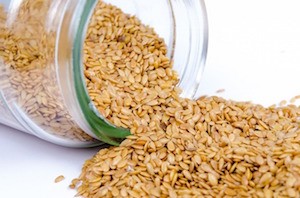 In the media we can often find information about the thousand virtues of certain foods: omega3 in flaxseed that is good for the brain, phytohormones in soy that are good for menopause, garlic and onion are antibiotics, chocolate, coffee and wine are still claimed to be beneficial due to their anti-oxidant properties... But what about the harmful effects of these foods? Why are the effects of such as phytic acid in flaxseed; lectins, saponins, oxalates, digestive enzyme inhibitors and goitrogens in soy; alicin in garlic and onion; tannins in chocolate, coffee and wine; oxalates and histamine in chocolate and coffee not considered?
In the media we can often find information about the thousand virtues of certain foods: omega3 in flaxseed that is good for the brain, phytohormones in soy that are good for menopause, garlic and onion are antibiotics, chocolate, coffee and wine are still claimed to be beneficial due to their anti-oxidant properties... But what about the harmful effects of these foods? Why are the effects of such as phytic acid in flaxseed; lectins, saponins, oxalates, digestive enzyme inhibitors and goitrogens in soy; alicin in garlic and onion; tannins in chocolate, coffee and wine; oxalates and histamine in chocolate and coffee not considered?









 Gemma Calzada es doctora en Salud Holística y terapeuta GAPS. Su objetivo es mejorar la salud con la nutrición y el estilo de vida, y ayudar a las personas que sufren intolerancias alimentarias a vivir felices.
Gemma Calzada es doctora en Salud Holística y terapeuta GAPS. Su objetivo es mejorar la salud con la nutrición y el estilo de vida, y ayudar a las personas que sufren intolerancias alimentarias a vivir felices. 
